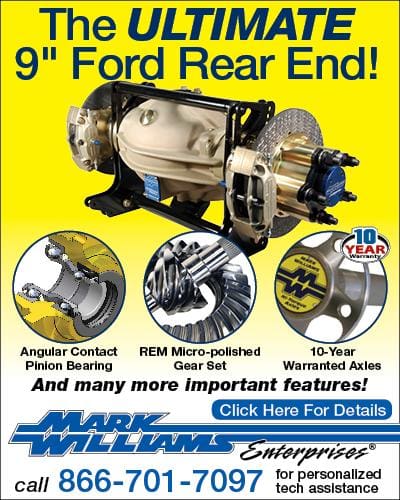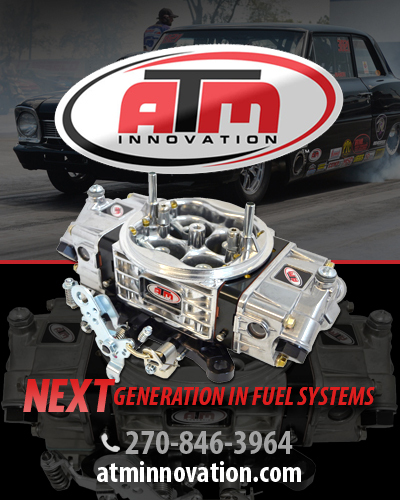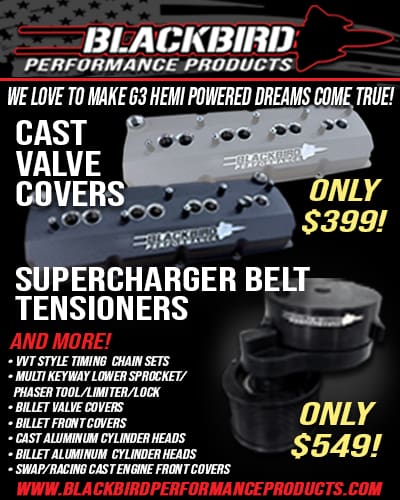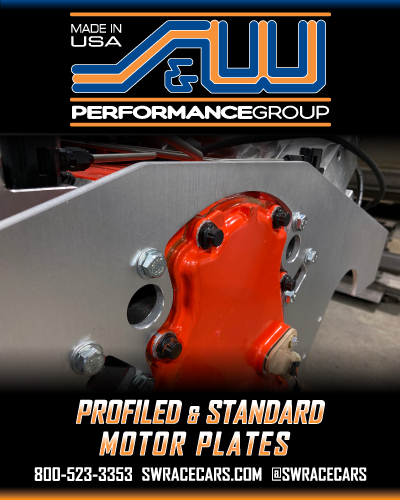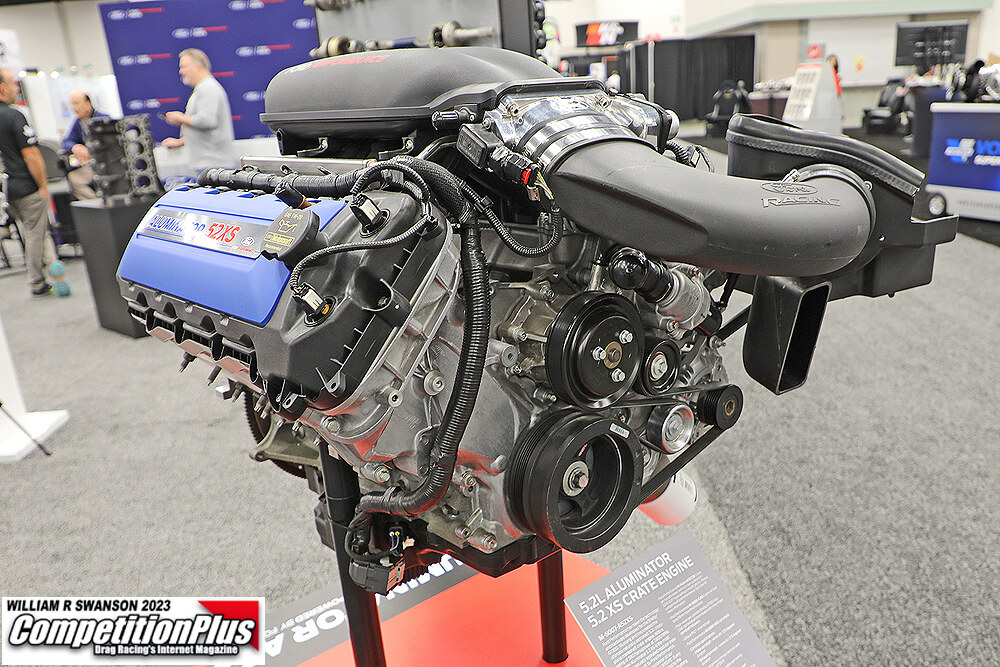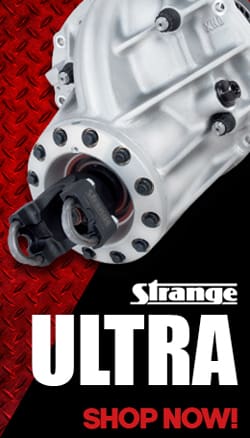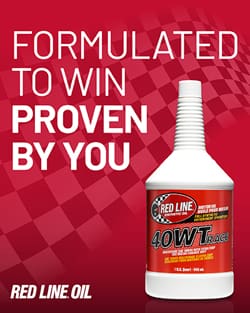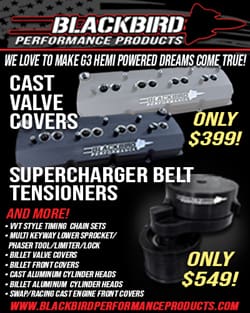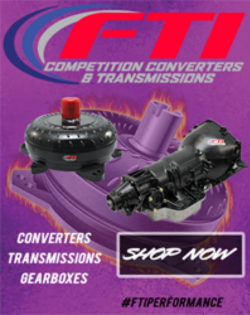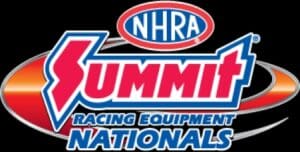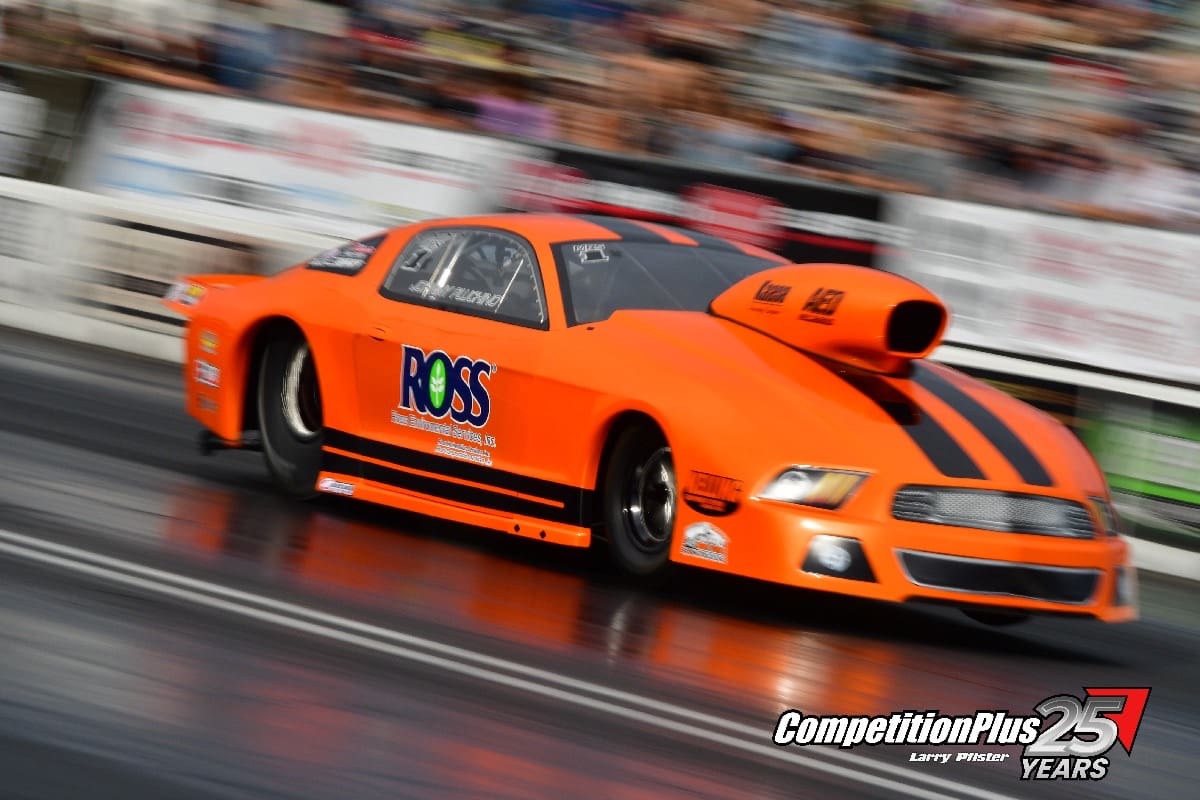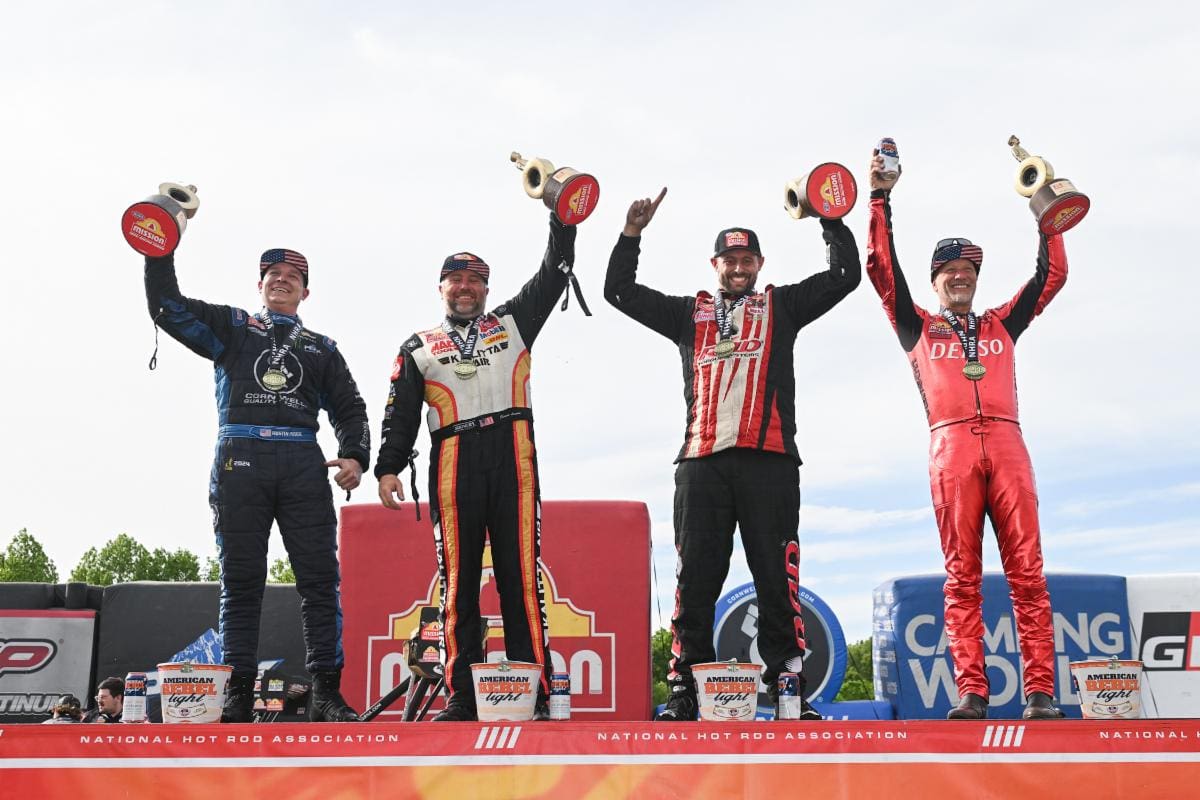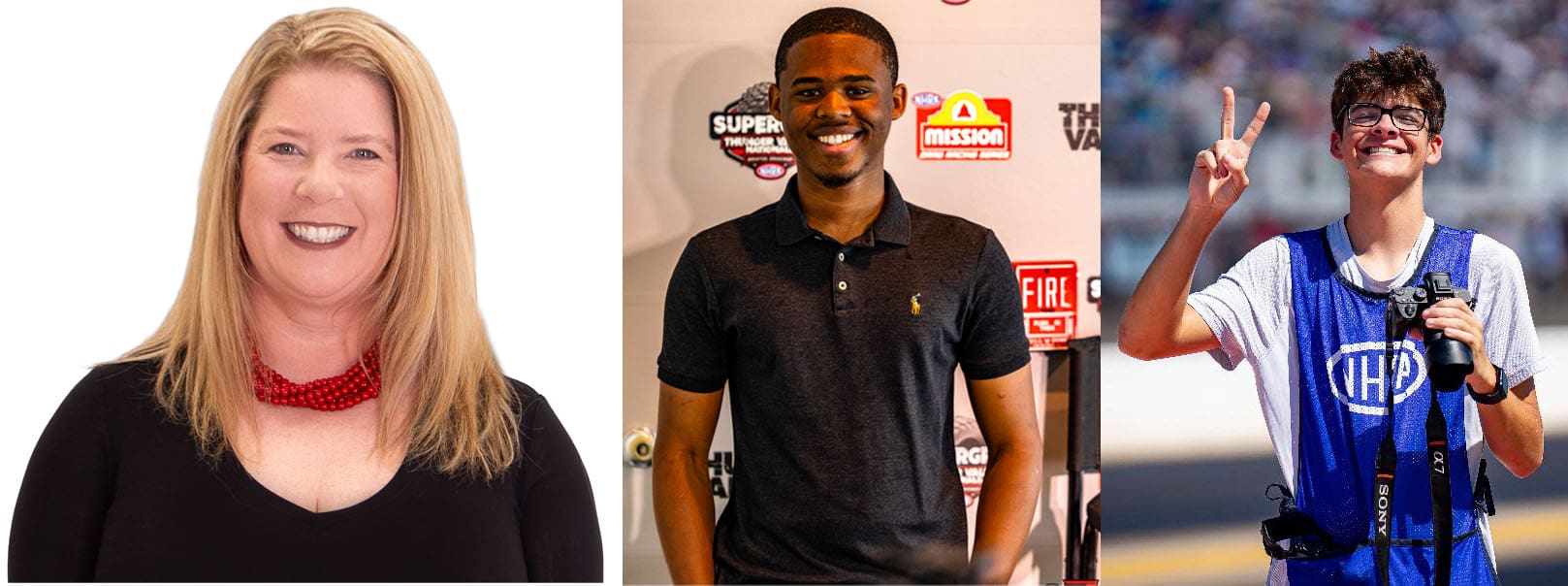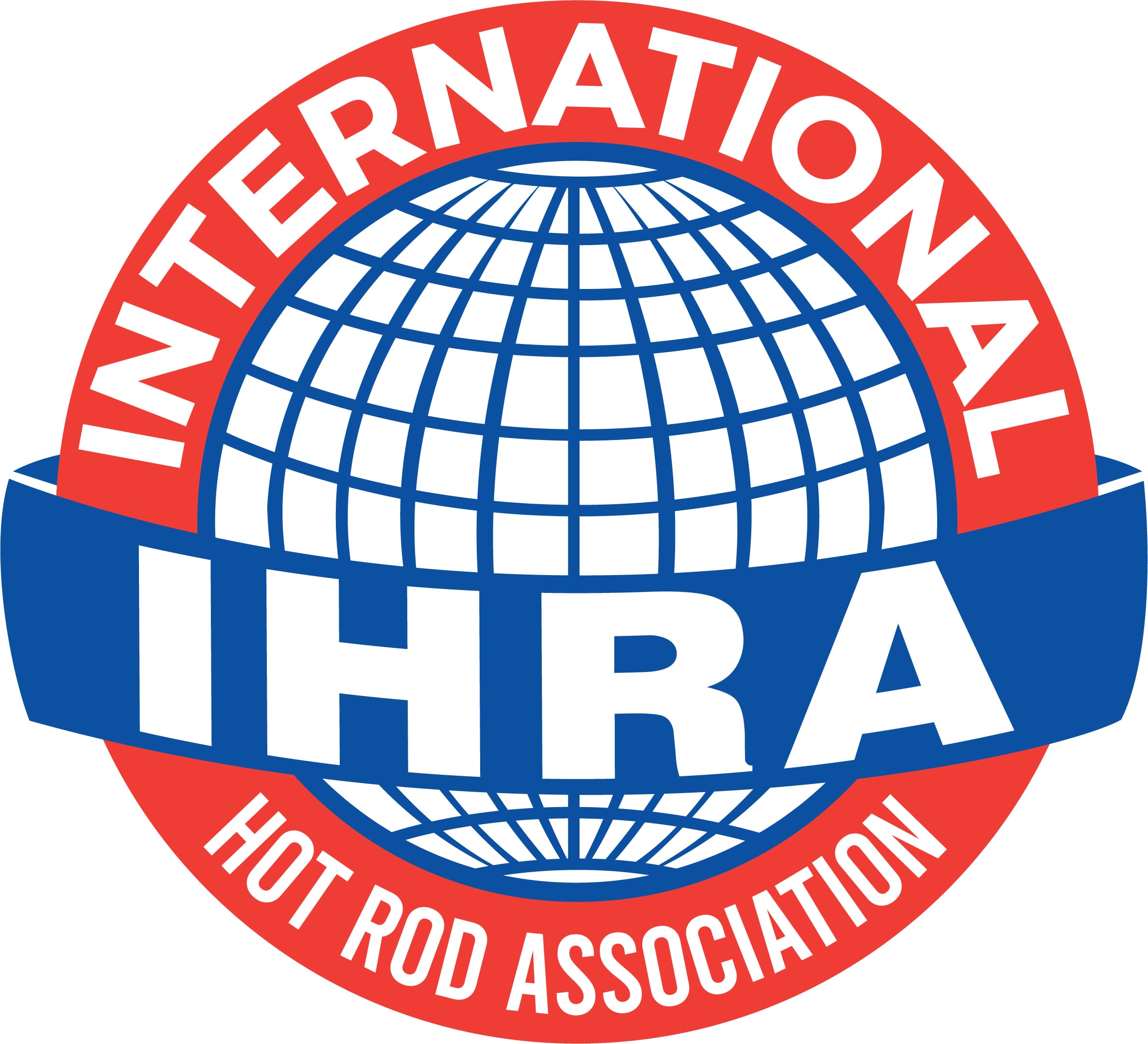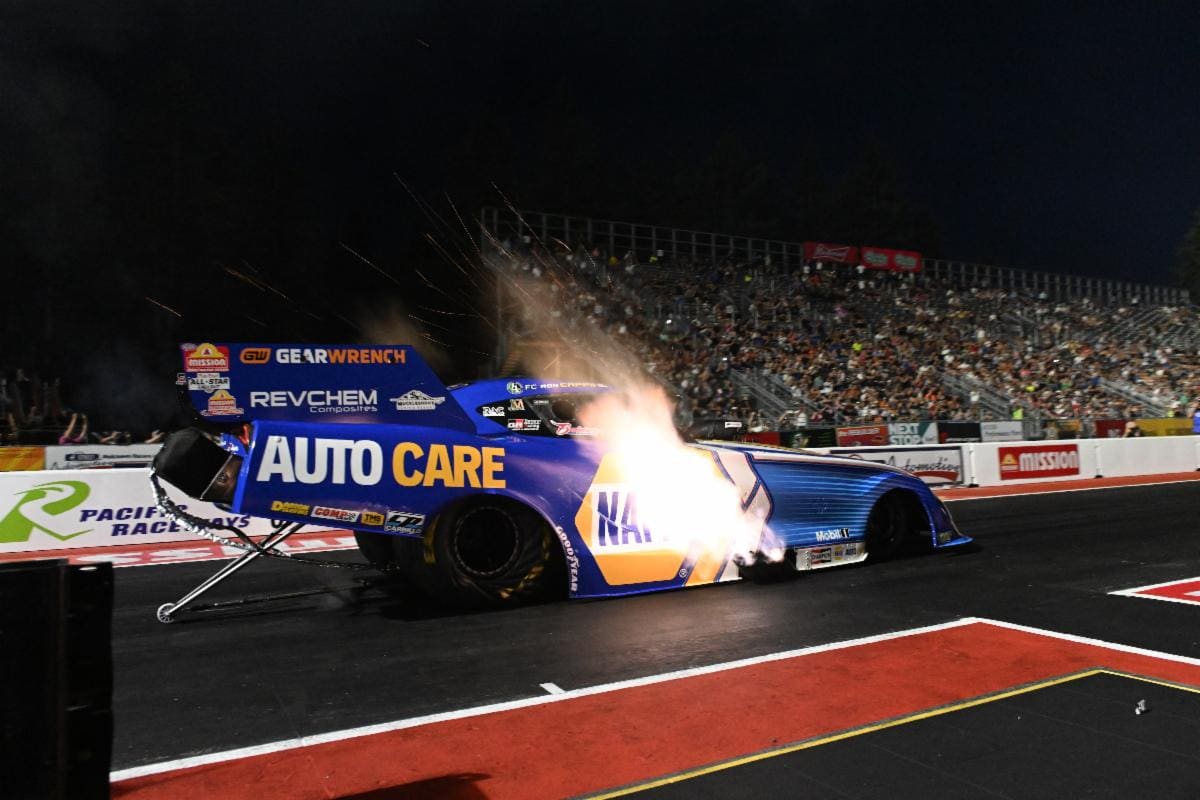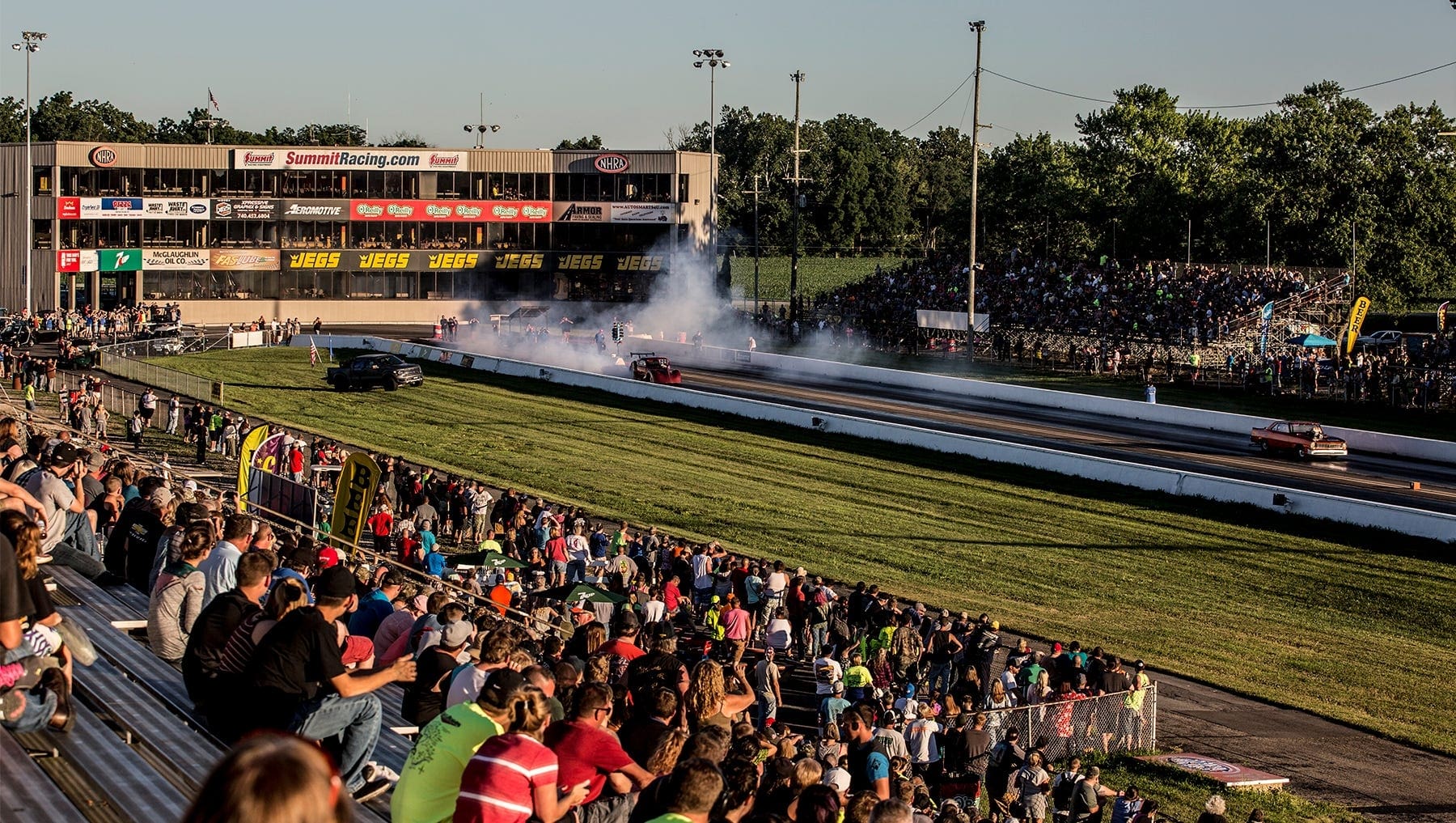
Back on July 11, 2008, at the Mile-High Nationals in Morrison, Colo., NHRA made a historic change.
For the first time, Top Fuel dragsters and nitro Funny Cars raced to 1,000 feet reduced from the traditional quarter-mile (1,320 feet).
According to NHRA officials at the time, the 1,000-foot finish line was an interim safety measure and was subject to change at the remaining 11 races after the Mile-High Nationals, but it has remained in place ever since.
The NHRA’s actions were enacted while the investigation continued into the on-track death of Scott Kalitta, a two-time NHRA world champion, June 21, 2008 in Englishtown (N.J.).
Now, seven years later, a handful of drivers discussed the state of 1,000-foot racing at the place where it started – Bandimere Speedway.
“I don’t even know why we are talking about it (1,000-foot racing),” said Chad Head, whose been driving a nitro Funny Car since 2013. “I’m tired of listening to it. I’m tired of hearing about it. I think the sanctioning body made an excellent call when they did it in 2008. I wasn’t involved in the sport at the time, but it was an excellent call and I support it 100 percent. Whether I’m a driver or a guy making hot dogs. I’ve been around the sport all my life and I guess the guy who doesn’t like it needs to get in one of these things and go 350 mph at 1,320 feet at an Englishtown or a real short shutdown. I guess it’s easy to say let’s not race at those places, but I don’t think that’s right at all. I think what is right is 1,000 foot. I think our sport is more competitive than it ever, ever, ever, ever has been.”

The only time Head has raced to a quarter-mile is in a Nostalgia Funny Car, but he has been around the sport forever. Jim Head, his father, is one of NHRA’s legendary innovators and he was a standout driver in both Top Fuel and Funny Car. He has been a fixture on the NHRA national circuit since 1980. Jim began his racing career in 1964 and is his son’s crew chief.
“When I raced that 320 feet to the quarter-mile nothing happened,” Chad said. “Guys were dropping cylinders, guys were blowing up. Now we are racing so hard to 1,000 foot. I’m tired hearing about it (quarter-mile racing). I’m tired of people writing about it. I’m tired of people talking about it. What we have now is better than it has ever been.”
Top Fuel driver/owner Terry McMillen, who has been racing fulltime in NHRA since 2010, believes the move to 1,000-foot racing made sense.
“These cars, you look at the numbers we have been running and they are faster than they have ever been,” McMillen said. “If we were to go back to a quarter-mile, and I’m a quarter-mile guy because that’s the way I grew up, the problem is a lot of these tracks are land locked and you just really can’t run the speeds that we are running today on those tracks, like at Pomona and Norwalk that are really, really short like that. Some of the tracks that we run on were built in the 1960s and 70s and they were never expecting the speeds we are running at today. We are running 300 (mph) to the eighth (mile) today. We running over 330-mph to the 1,000 foot. Can you imagine what that extra 320 feet would be like?”
McMillen also doesn’t know if quarter-mile racing will return.

“As much as I would like to see us go back to a quarter-mile I just don’t know that it could work without a financial burden to the race teams,” McMillen said. “I think at the end of the day we have all adapted to the 1,000 foot and I think we have all built our tune-ups around that. The downside to trying to run both ways (a quarter-mile and 1,000-foot) is that there is a lot more cost involved because you have to have a set up for a quarter-mile and 1,000-foot and believe it or not 320 feet makes a big difference in one of these things. If we had the right track situation and the right run-off then I’m fine with going a quarter-mile, but if we are going to do that we need to do the same thing all year long. We can’t be this race is going to be 1,000 foot and this race is going to be a quarter-mile because financially we couldn’t afford that.”
Tommy Johnson Jr., who drives the Make-A-Wish Dodge nitro Funny Car for Don Schumacher Racing, concurred with McMillen.
“I ran a couple of tracks even this season where I thought man I’m glad we don’t run to a quarter-mile here,” Johnson said. “I think it is still serving its purpose (1,000-foot racing) because certain facilities are extremely tough to get stopped at. Atlanta comes to mind this season. I was on the brakes hard the entire time in the shutdown area even running to 1,000 feet. What these cars would run at a quarter-mile I’m not sure I would want to do that.”
On the other hand, Larry Dixon, a Top Fuel world champion in 2002, 2003 and 2010 has mixed feelings about 1,000-foot racing. Dixon is in his first season driving full-time for Bob Vandergriff Jr. Racing. He came to the Mile-High Nationals third in the point standings.
“At the time it was presented that it was going to be a temporary solution until we could the race tracks with the proper shutdowns and equip our cars with emergency cutoff switches and such and we did all that and we never went back,” Dixon said. “They never said it was permanent, but they never said it was temporary, so I don’t know. I got to race a quarter-mile a couple of years back in Australia, and it was a blast. I had forgotten what it was like. There’s a lot of people now racing who probably have never raced a Top Fuel car in a quarter-mile. It would be nice to be able to give the fans more of a show.”
Dixon offered his thought about safer, better racing to 1,000 feet.
“It would even be tighter and safer if you want to race 60 foot,” Dixon said. “I don’t know how to comment other than that.”










